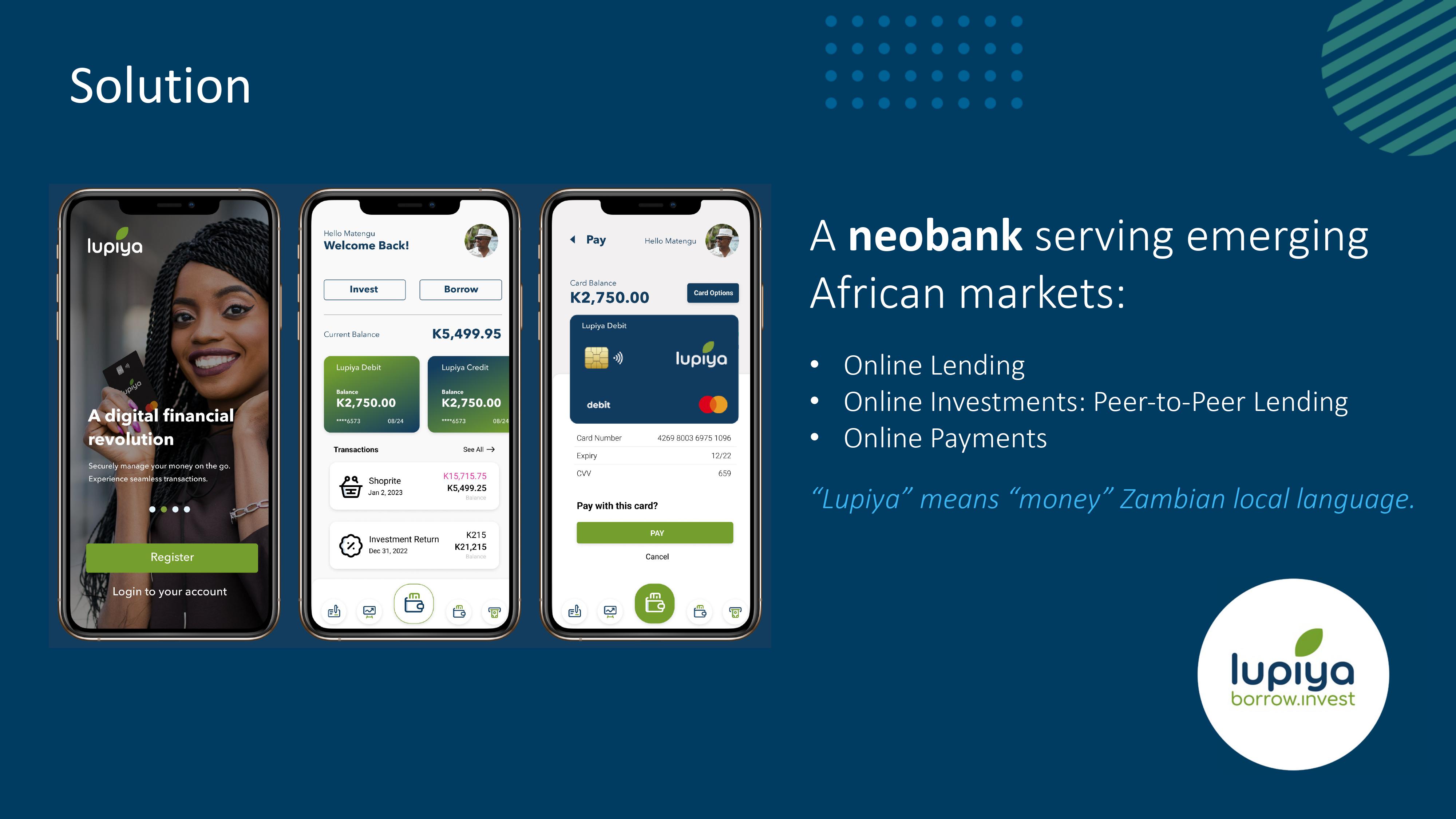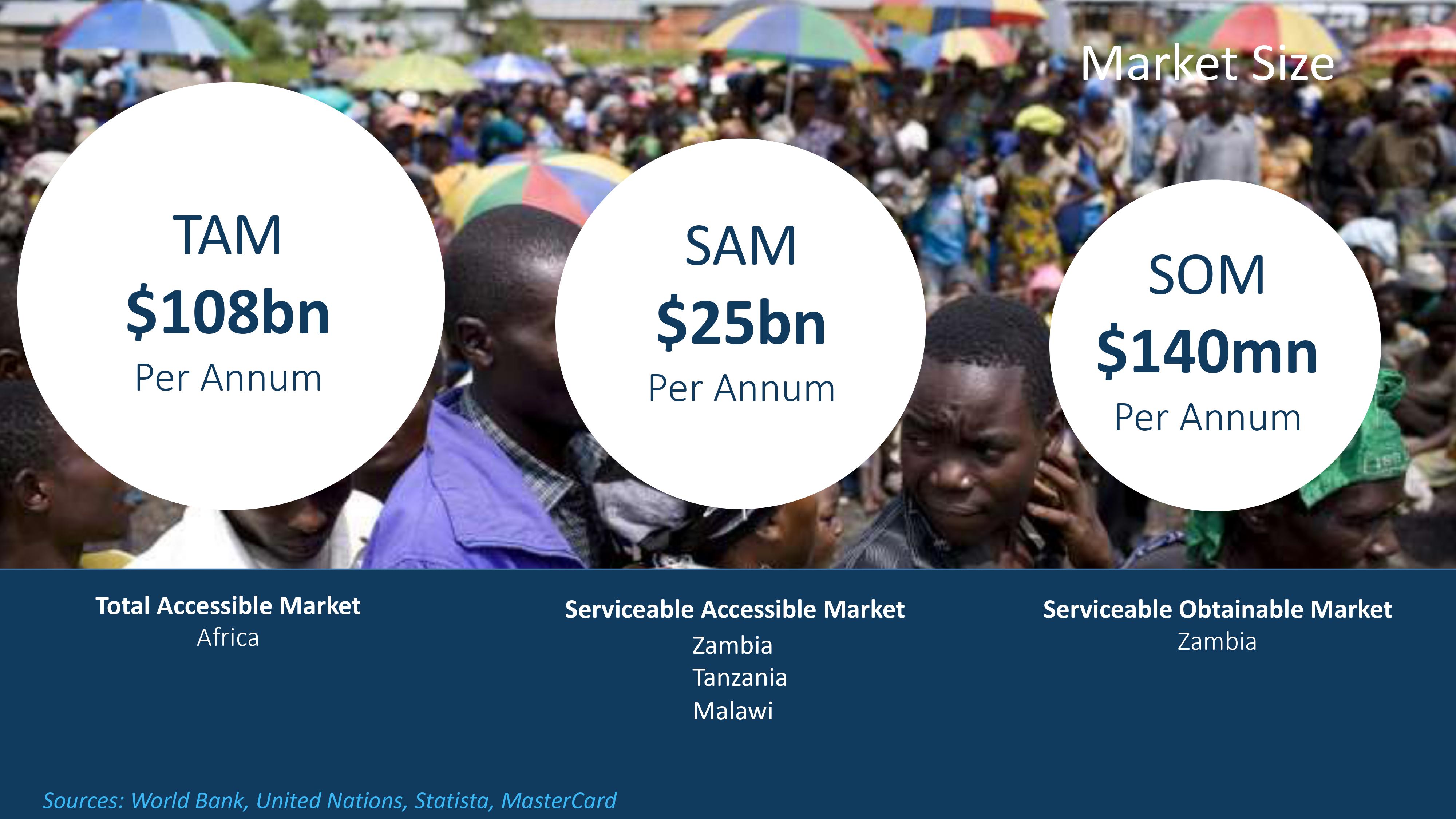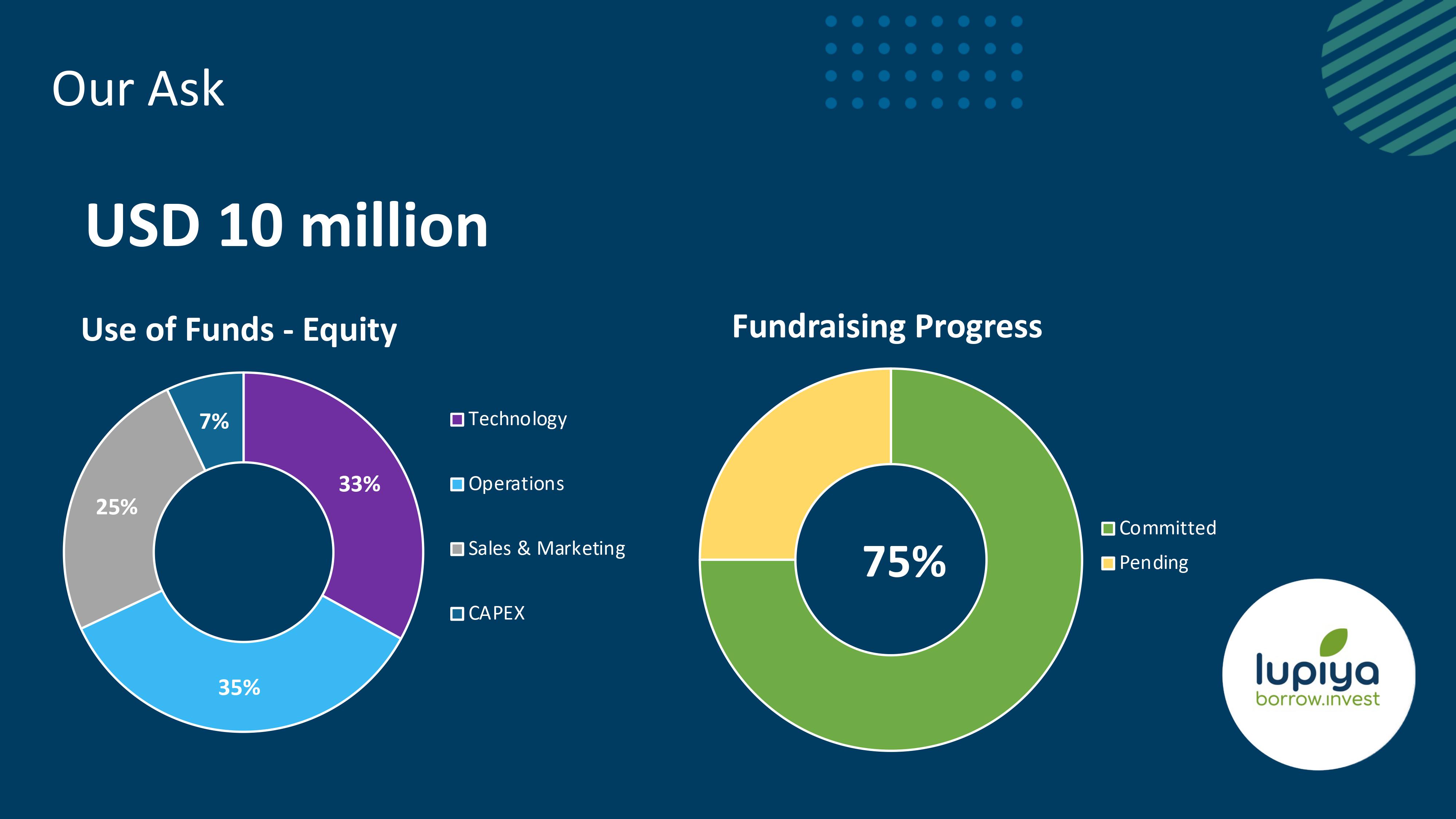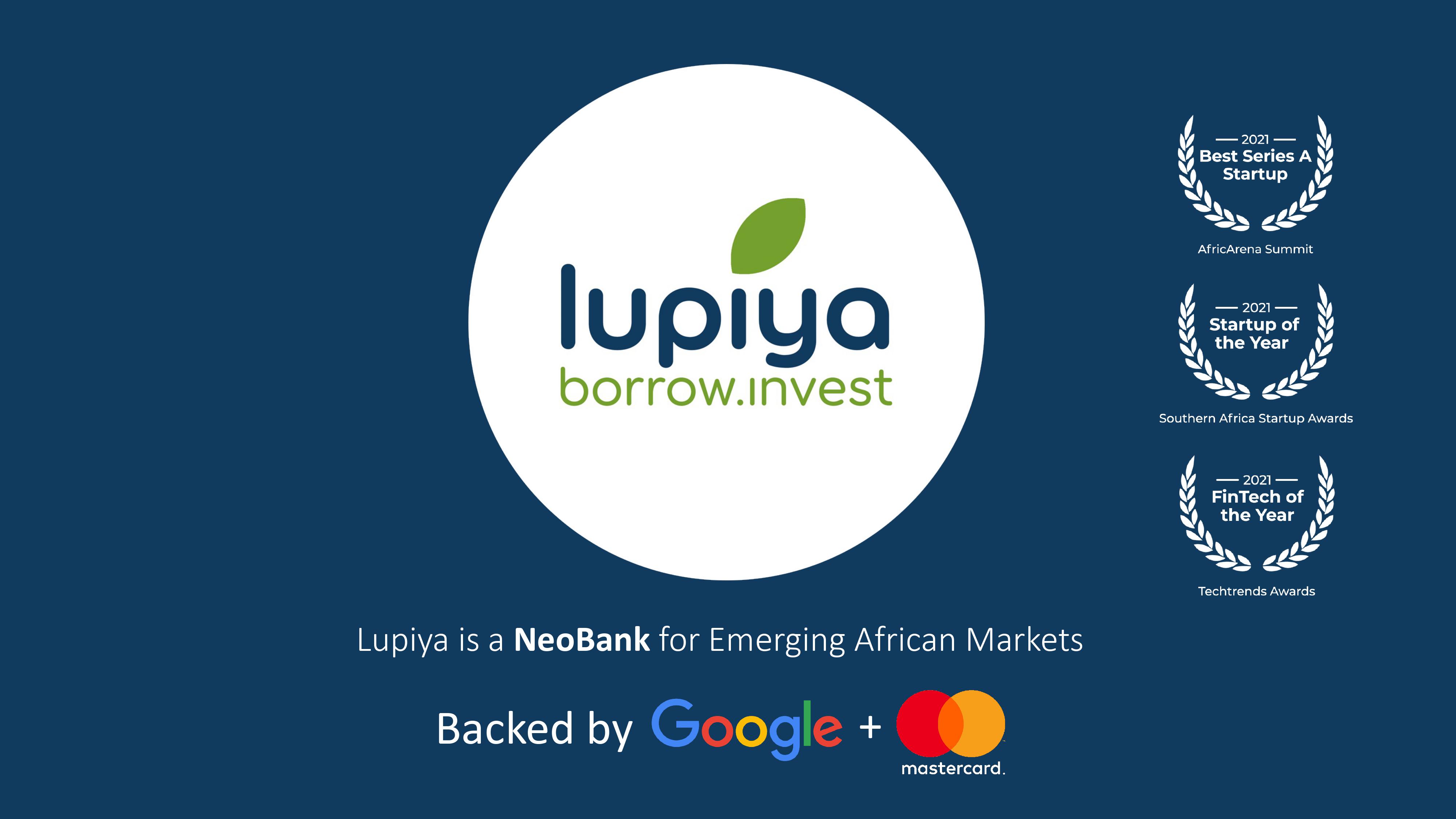There haven’t been many neobanks cropping up lately, so I was a little surprised to learn that Lupiya recently raised a $8.3 million Series A. The company claims it is trying to make the world better “by creating a landscape that promotes an economically empowered Zambia.”
For the 69th installment (nice!) of the Pitch Deck Teardown series, let’s take a peek at how Lupiya told its story to close this round.
We’re looking for more unique pitch decks to tear down, so if you want to submit your own, here’s how you can do that.
Slides in this deck
Lupiya’s deck is impressively compact at just 10 slides. A compact deck makes for a great way to tell the story quickly, but it also means you risk missing a couple of things.
That 30-slide deck won’t cut it anymore
The company said it has edited its traction slide to protect some sensitive details, but it did share some of the numbers with me in confidence. Suffice it to say, the company has some pretty impressive metrics to back up its progress since it was founded in 2016.
Here are the slides in the deck:
- Cover slide
- Problem slide
- Solution slide
- Market size slide
- Business model slide
- Competition slide
- Traction slide
- Team slide
- Ask and use of funds slide
- Closing slide
Three things to love
There are always going to be some pieces missing in a 10-slide deck, but overall, I’m extremely impressed with what’s there. Here are three highlights:
Techcrunch eventJoin 10k+ tech and VC leaders for growth and connections at Disrupt 2025
Netflix, Box, a16z, ElevenLabs, Wayve, Sequoia Capital, Elad Gil — just some of the 250+ heavy hitters leading 200+ sessions designed to deliver the insights that fuel startup growth and sharpen your edge. Don’t miss the 20th anniversary of TechCrunch, and a chance to learn from the top voices in tech. Grab your ticket before Sept 26 to save up to $668.
Join 10k+ tech and VC leaders for growth and connections at Disrupt 2025
Netflix, Box, a16z, ElevenLabs, Wayve, Sequoia Capital, Elad Gil — just some of the 250+ heavy hitters leading 200+ sessions designed to deliver the insights that fuel startup growth and sharpen your edge. Don’t miss the 20th anniversary of TechCrunch, and a chance to learn from the top voices in tech. Grab your ticket before Sept 26 to save up to $668.
San Francisco | October 27-29, 2025 REGISTER NOWA clear, metrics-forward problem statement

A lot of startups give in to the temptation to only state the problem (“Financial services in Africa are inefficient”) and forget to bring the receipts.
Well, take a leaf out of Lupiya’s book: Bring the numbers to show the scope and severity of the problem. It’s almost like a sneaky preview of the market size rolled in with the problem statement. Very well done.
Clear and clean business model
I don’t know about you, but I found it pretty interesting to see the numbers Lupiya has baked into its business model, especially when compared to the numbers I’m used to from banking services elsewhere in the world:

As an investor who’s not from the region, I’d be curious to know what the average deal offering is across the area. Is a 10% service fee and 8% interest common? Is that market rate or a competitive edge?
In any case, I like a good, clean, simple business model, and this ticks that box.
Solution brevity

I often argue that startups spend way too much time on their product slides, so I was impressed with Lupiya’s execution on this front. It shies away from the desire to include pages upon pages of details about its product, instead summarizing the whole thing with three screenshots and three bullet points. In the vast majority of cases, that’s enough for the first pitch; you can always demo the product in a later meeting. Very well done.
In the rest of this teardown, we’ll take a look at three things Lupiya could have improved or done differently, along with its full pitch deck.
Three things that could be improved
Unlike last week’s pitch deck teardown, where I could scarcely believe that the team had raised money at all, I can totally see how Lupiya has managed to raise the funding.
That said, there were definitely a few gaping holes in its pitch deck.
Dodgy market sizing

This is not how you want to do a market sizing slide. The numbers on the slide are plausible: I do believe that the banking market in all of Africa is worth $108 billion a year. But I am doubtful that the value of banking in just three countries accounts for 23% of that, especially given that Zambia, Tanzania and Malawi are #20, #9 and #35 in the region, respectively, as listed by GDP.
This slide therefore becomes a pretty big red flag. As an investor, I’d want to dig into how the founders are thinking about their target market.
The worst assumption here, however, is the SOM (serviceable obtainable market): It seems like the company is saying it is poised to hoover up the entire Zambian market. That is unlikely, since even the best player in a market will have competition and will not be able to penetrate the entirety of it.
Assuming that Lupiya is planning to enter the three markets it lists under its SAM (serviceable available market), a better way to tell this story would be to say that the SAM is the TAM (total addressable market). From there, identify which segments of the market you can go after (private banking, loans, business banking, online banking, etc.) to arrive at your SAM. Then the subset of the customers you can actually reachwill become your SOM.
Yeah, but whatcha gonna spend the money on?

I want to acknowledge how courageous Lupiya is for sharing this pitch deck with TechCrunch. This slide says it was trying to raise $10 million but the company ended up raising $8.3 million. In all the 69 pitch decks (and the hundreds I decided not to cover) I’ve examined for this series to date, I’ve likely never had a single company submit a deck that didn’t raise the full amount. That takes bravery. Well done.
Having said that, expressing your use of funds as percentages is rarely helpful. It doesn’t show what you’re planning to do with your business.
Never express your ‘use of funds’ slide as percentages
No glimpse of the future
The weirdest part of this pitch deck is that it is almost exclusively focused on the company’s past. It shows what the company has been doing so far, but it does not even hint at what it is hoping to accomplish in the future. That’s a mistake, because while your investors do need to understand your past, they are investing money to take you into the future and want you to paint a picture of what that future could look like.
Are you planning to develop your product? Expand to new markets? Increase the value per customer? Reduce your customer acquisition costs? Tell your investors. Those plans are key to whether you raise or not. Hell, they’re the reasonyou’d be raising in the first place.
Bonus: Backed by who now?!
Lupiya’s cover slide drops a hell of a fact on us:

In a font larger than its own slogan, the company claims it is backed by Google and Mastercard. Then, somehow, fails to mention that again in the rest of the deck.
It’s like watching a TV show because its trailer tells you it has Robert Downey Jr., Will Smith, Tom Cruise and Chris Hemsworth in it, but then none of them make an appearance in even one episode.
You can’t do that. I am confused: What does “backed by” mean? Did they invest any money? Did they give you server space? What is going on here? It feels weird.
It’s also strange that the company is telling people that it won the Best Series A Startup award in 2021 when it didn’t raise its Series A until 2023. Besides, those awards are only vanity metrics. Lose them; they aren’t impressing anyone.
The full pitch deck
If you want your own pitch deck teardown featured on TC+, here’s more information. Also, check out all our Pitch Deck Teardowns and other pitching advice, all collected in one handy place for you!

